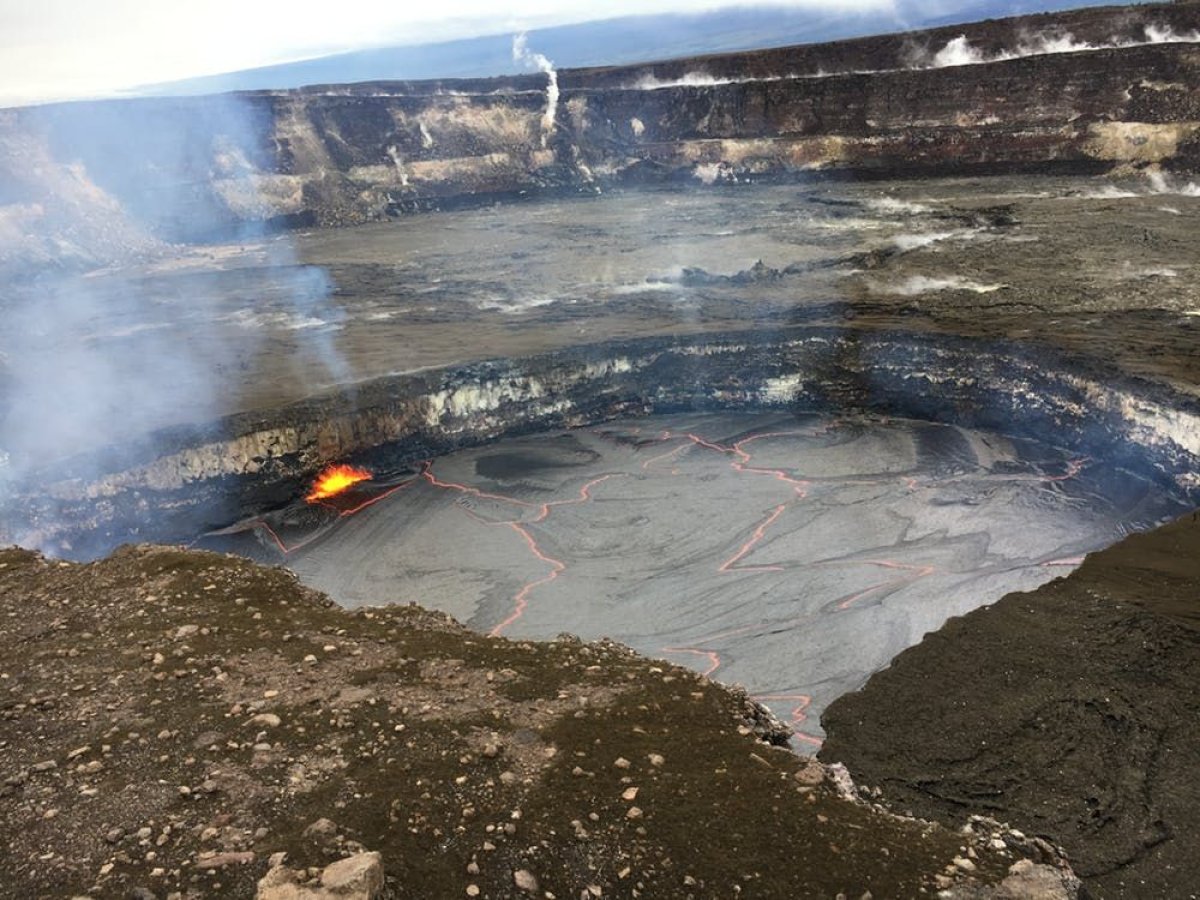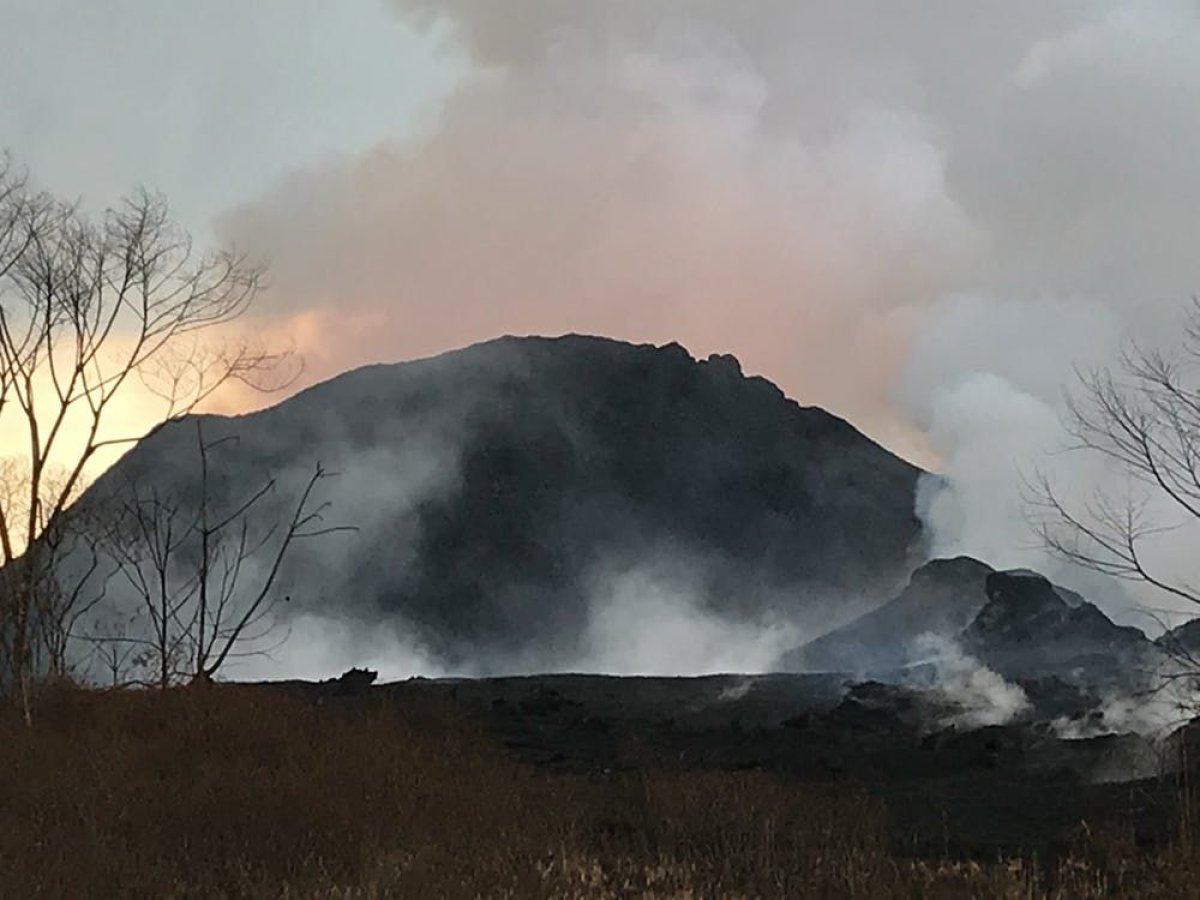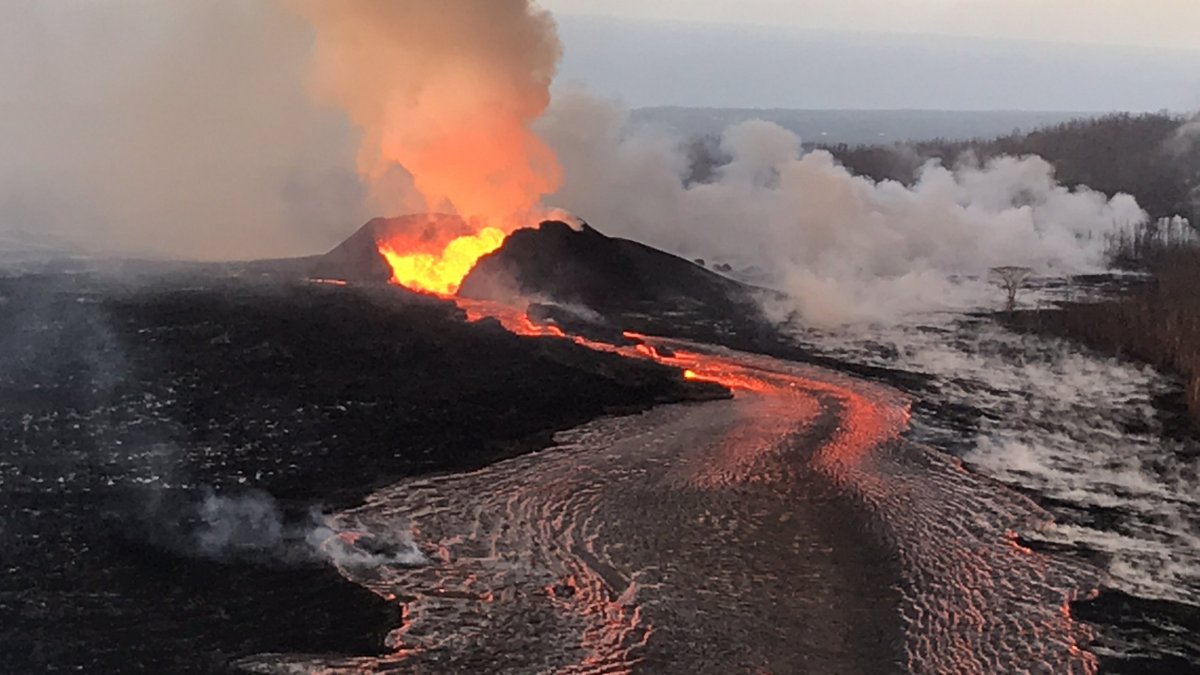Kilauea, the most active volcano on Hawaii, has been in continual eruption since 1983. It entered a new phase in early May when fractures along a rift on the eastern side of the volcano opened during a series of earthquakes—some of which became volcanic fissures from which lava erupted.
These fissures allowed magma that had been ponded in a lava summit lake to drain onto the ground surface as lava flows lower down the mountain. This was close to a residential subdivision known as Leilani Estates, where a new volcanic cone has since developed.

Kilauea is buttressed on its north-west side by the enormous mass of Mauna Loa volcano, but its south-east slopes face the ocean and are unsupported. The magma from beneath the volcano usually erupts from the summit of the volcano, and there was a spectacular lava lake there in March. However two rift zones (areas where the volcano is splitting apart), extending east and south-west from the summit, can make it possible for lava to erupt from Kilauea's flanks too.
Time lapse animation made from USGS maps of active lava during the May-June 2018 eruption of Kilauea.
The current activity is based along the east rift zone. According to the U.S. Geological Survey, 23 separate new fractures there became volcanic fissures from which lava was erupted. By the end of May, "fissure 8" (the eighth new fissure to have announced itself) had become dominant—with activity at the others ceasing or subsiding. This was the source of the lava that by June 4 was flowing into the sea several miles away near the Vacationland resort, where it completely filled what had previously been Kapoho Bay.

By mid-June, the coagulated spatter around the persistently active part of fissure 8 had built a cone approaching 200 feet high. This is a prominent and substantial feature on the landscape, and one that is likely to endure for thousands of years unless it is obliterated by later more violent or voluminous volcanic activity.
Separate plumbing
The question naturally arises as to whether this new hill and source of all that lava is a volcano in its own right. If you look on the internet you will typically find "volcano" defined as something like "a landscape feature produced at a site where magma is erupted." Such a simplistic definition would qualify the "fissure 8" cone as a volcano, but I think just about every professional volcanologist would reject this, on the grounds that it is merely a subsidiary vent belonging to Kilauea.
This is because it is fed by magma from the source that supplies Kilauea as a whole, and could equally well have erupted elsewhere on Kilauea. The new cone at fissure 8 is not significantly more substantial than numerous older subsidiary cones elsewhere on Kilauea.

However, you would search in vain for a formally sanctioned definition of the term "volcano" to quantify the degree of connectedness or mutual size relationships in a way that could settle this issue. On the positive side, the lack of such a definition enables volcanologists to avoid the sometimes bitter controversy over the formal definition of the term "planet" that has plagued astronomers since 2006, when Pluto was demoted to being a "dwarf planet." But it does leave them open to people arguing that, if the fissure 8 cone is just part of Kilauea, then why don't we count Kilauea as just part of Mauna Loa?
There is some logic in this, because Kilauea and Mauna Loa both draw their magma from the same source in the Earth's mantle (the Hawaiian hotspot plume). But in this case professional volcanologists generally agree that these are best regarded as separate systems, and the U.S. Geological Survey rightly regards the situation that way. That's because activity at Kīlauea has no discernible effect on Mauna Loa's magmatic system.
A name?
Although I would agree that the fissure 8 vent is not a volcano in its own right, it does surely deserve to be referred to by a suitably memorable designation. The stance of the U.S. Geological Survey is that bestowing names is not up to them.
This, they say, is the right of the local community, which includes the many people who have lost their homes to the new lava flows. It could end up being known as Pu'u Leilani (Hawaiian for "Leilani Hill," after its location), or maybe as something more poetic. But the time for this will be when this phase of the eruption has ended, which might not be for several more weeks.
David Rothery, professor of planetary geosciences, The Open University. The views expressed in this article are the author's own.
This article was originally published on The Conversation. Read the original article.
Uncommon Knowledge
Newsweek is committed to challenging conventional wisdom and finding connections in the search for common ground.
Newsweek is committed to challenging conventional wisdom and finding connections in the search for common ground.
About the writer
To read how Newsweek uses AI as a newsroom tool, Click here.








